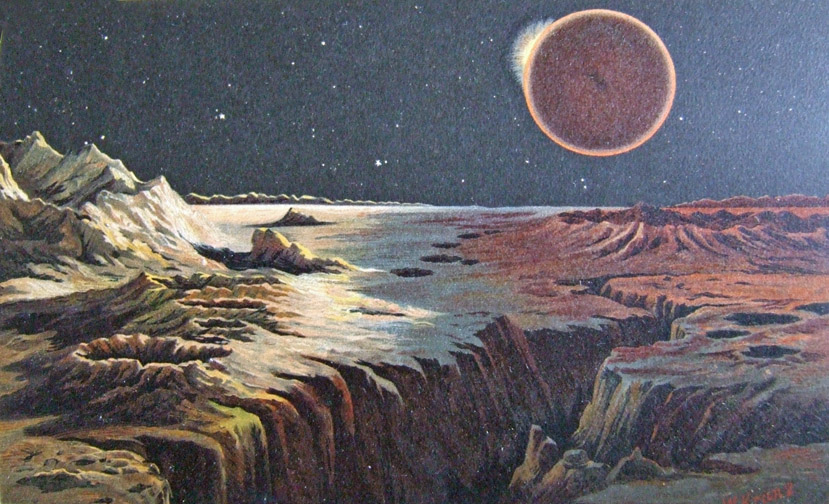
image from L’Universo Stellato, courtesy Paolo Amoroso
Science novels and imaginary art showing other worlds developed in parallel, but ahead of, science fact. Kepler wrote a science fiction story about the Moon just as the first telescopes were revealing it as a world, and the space race of the 1960s led to much futuristic space art. Today’s LPOD shows that the morphology of the Moon as known in 1900 influenced the attractive space art of the time. This pastel image from L’Universo Stellato, an Italian translation of a 19th century coffee table book by German astronomer Max Wilhelm Meyer, is labelled “Solar eclipse on the Moon - Imaginary landscape drawn by W. Kranz.” The shadow cast by Earth is pinkish where it dramatically falls on a raised rim crater. Rimless pits and small rimmed craters litter the surface, and a Apennine-like chain of jagged mountains is on the horizon and to the left. Is the sheer-sided meandering trench a sinuous rille? Most of the Moon is color-free except for the yellow-green deposit on the upper edge of the trench - perhaps an anticipation of the discovery of green glass by Apollo 15?
Technical Details:
none.
Related Links:
Rükl chart: none
Yesterday's LPOD: A Ho-Hum Place
Tomorrow's LPOD: A Lunar Nebula
COMMENTS?
Register, Log in, and join in the comments.



